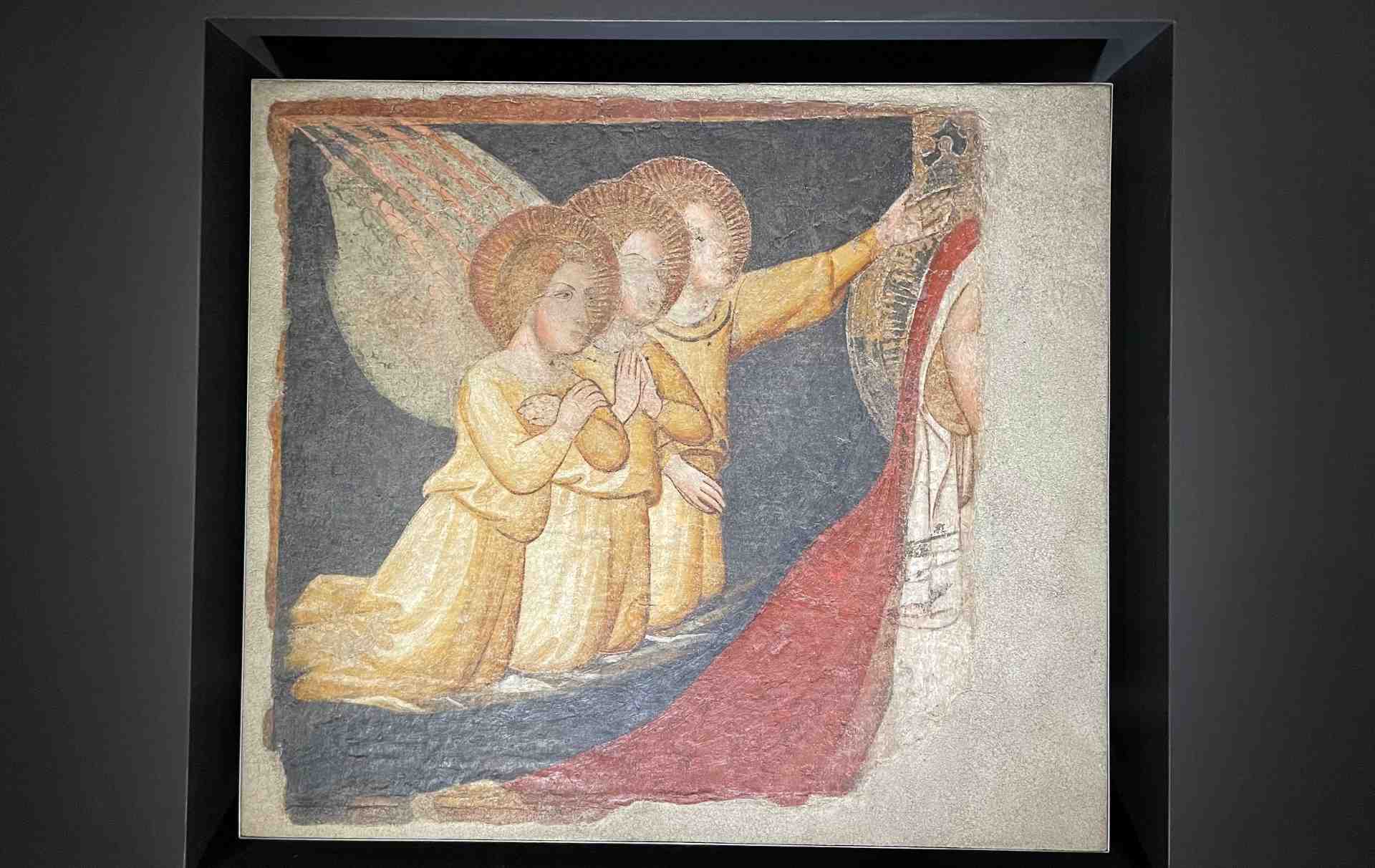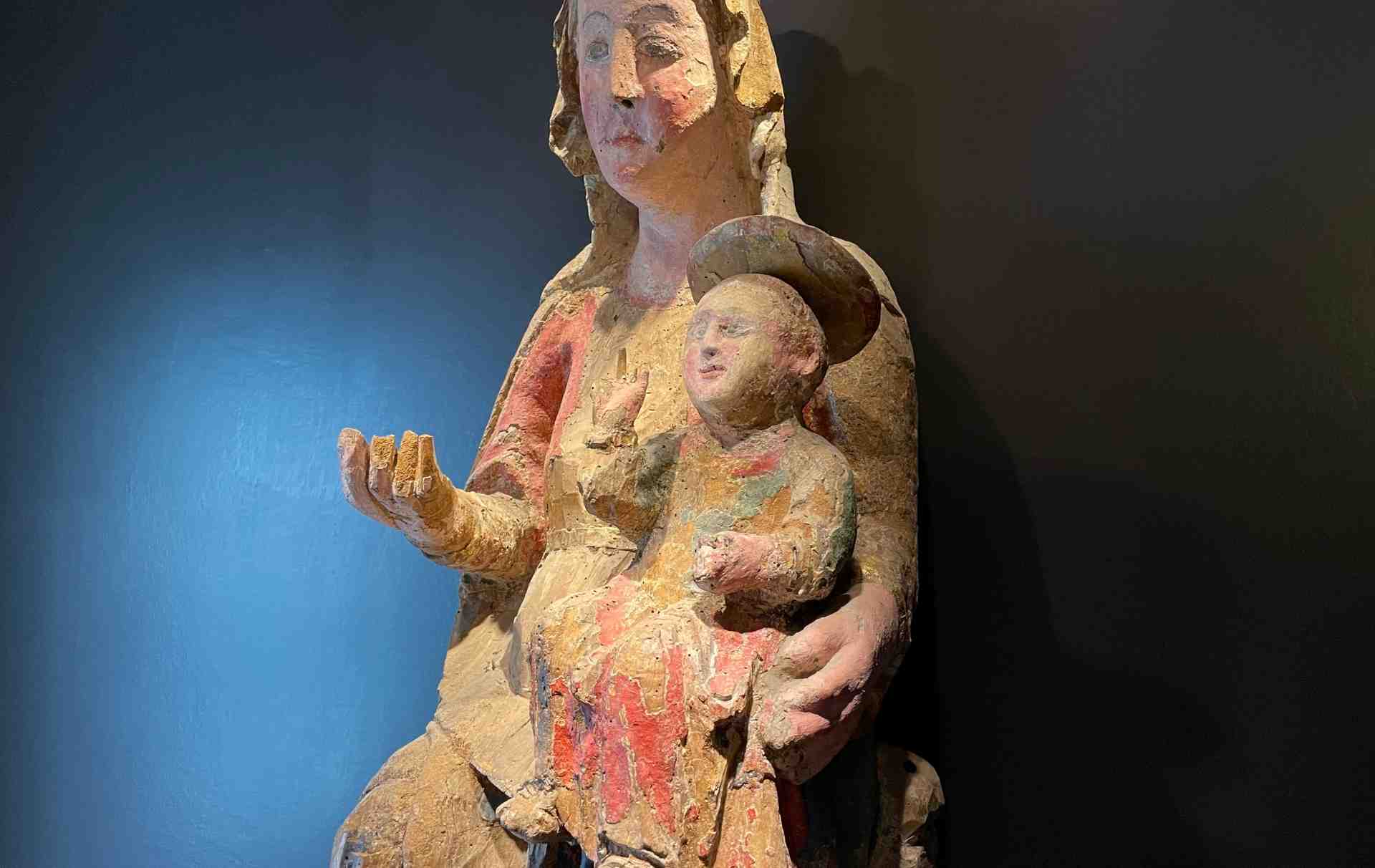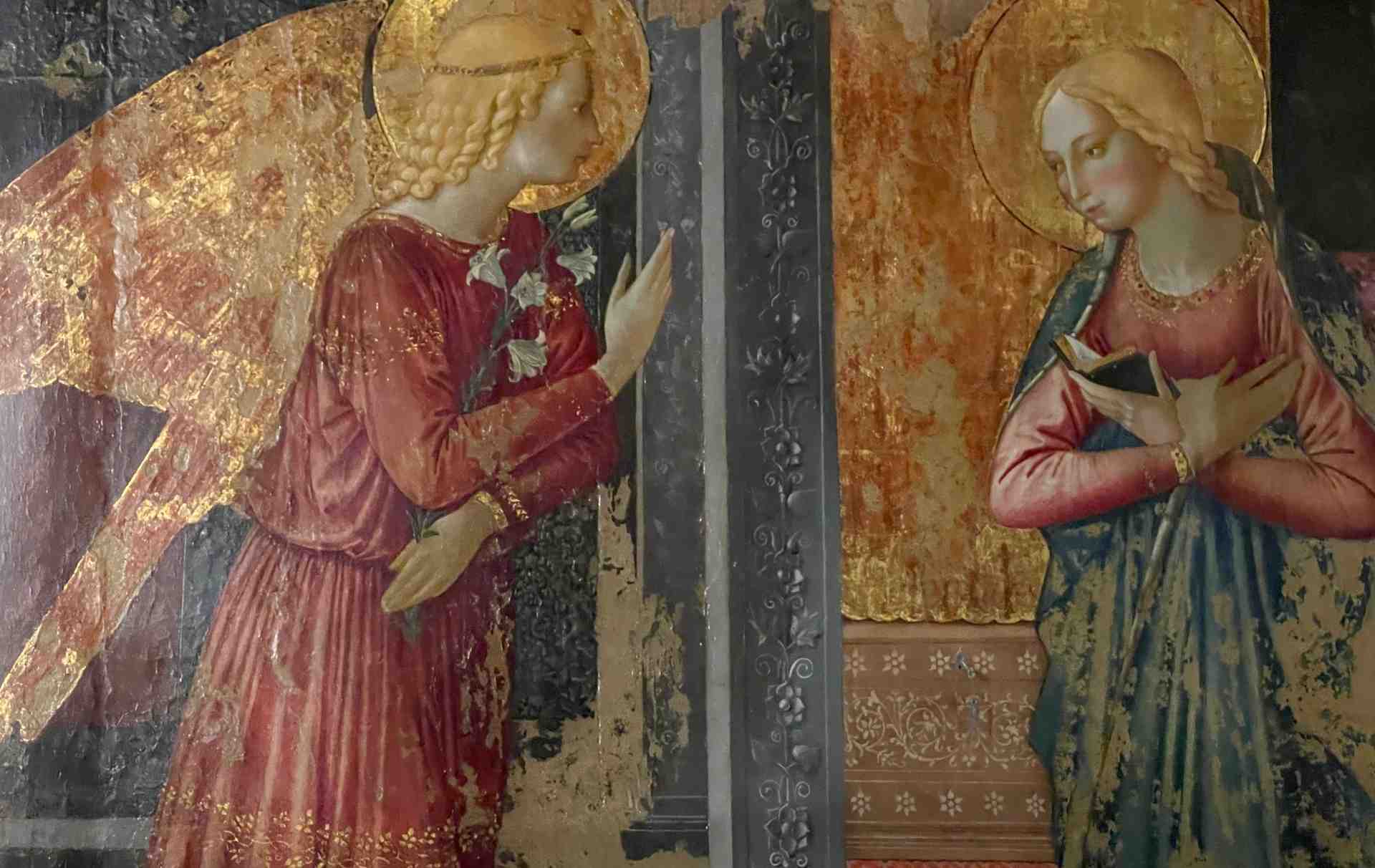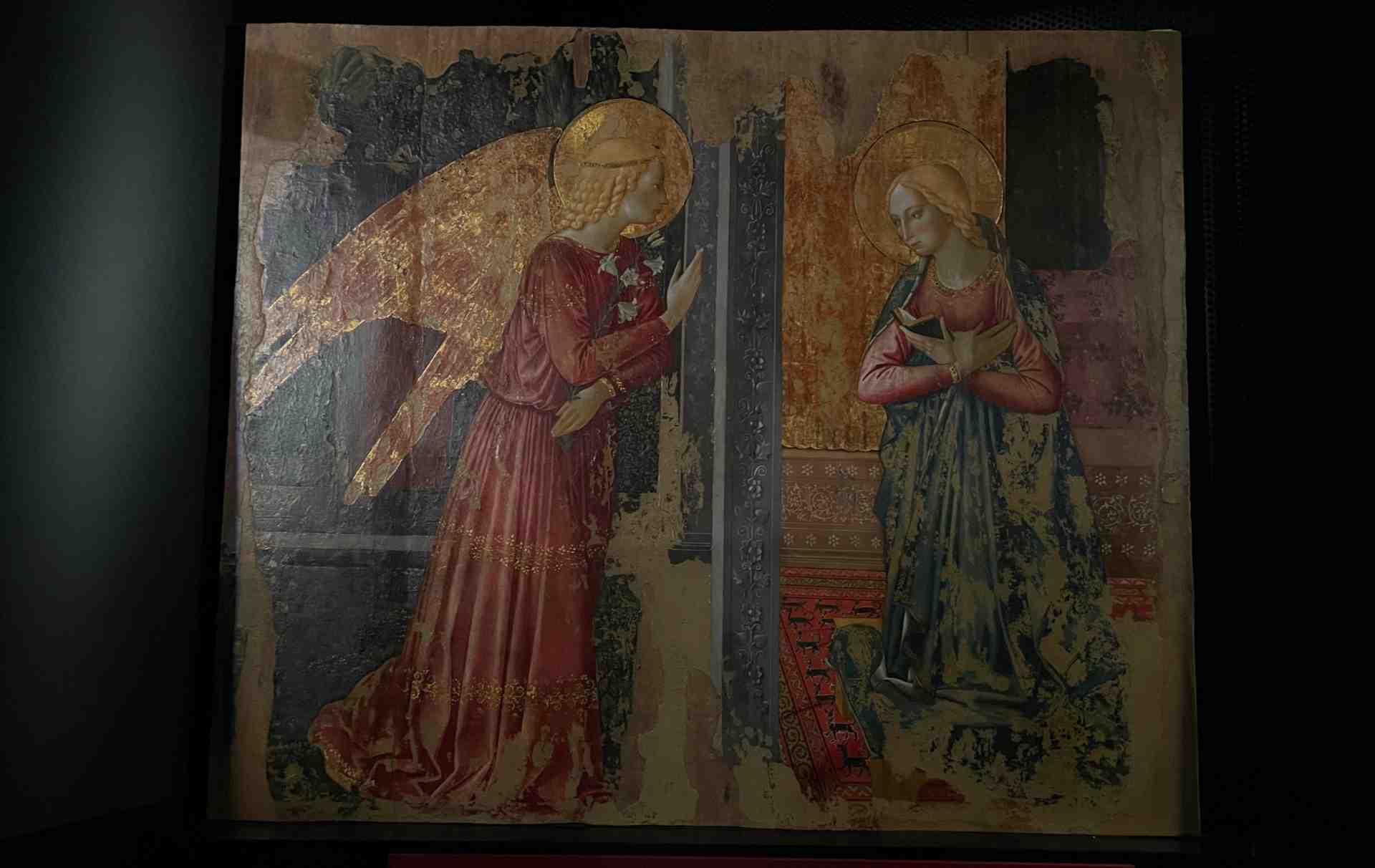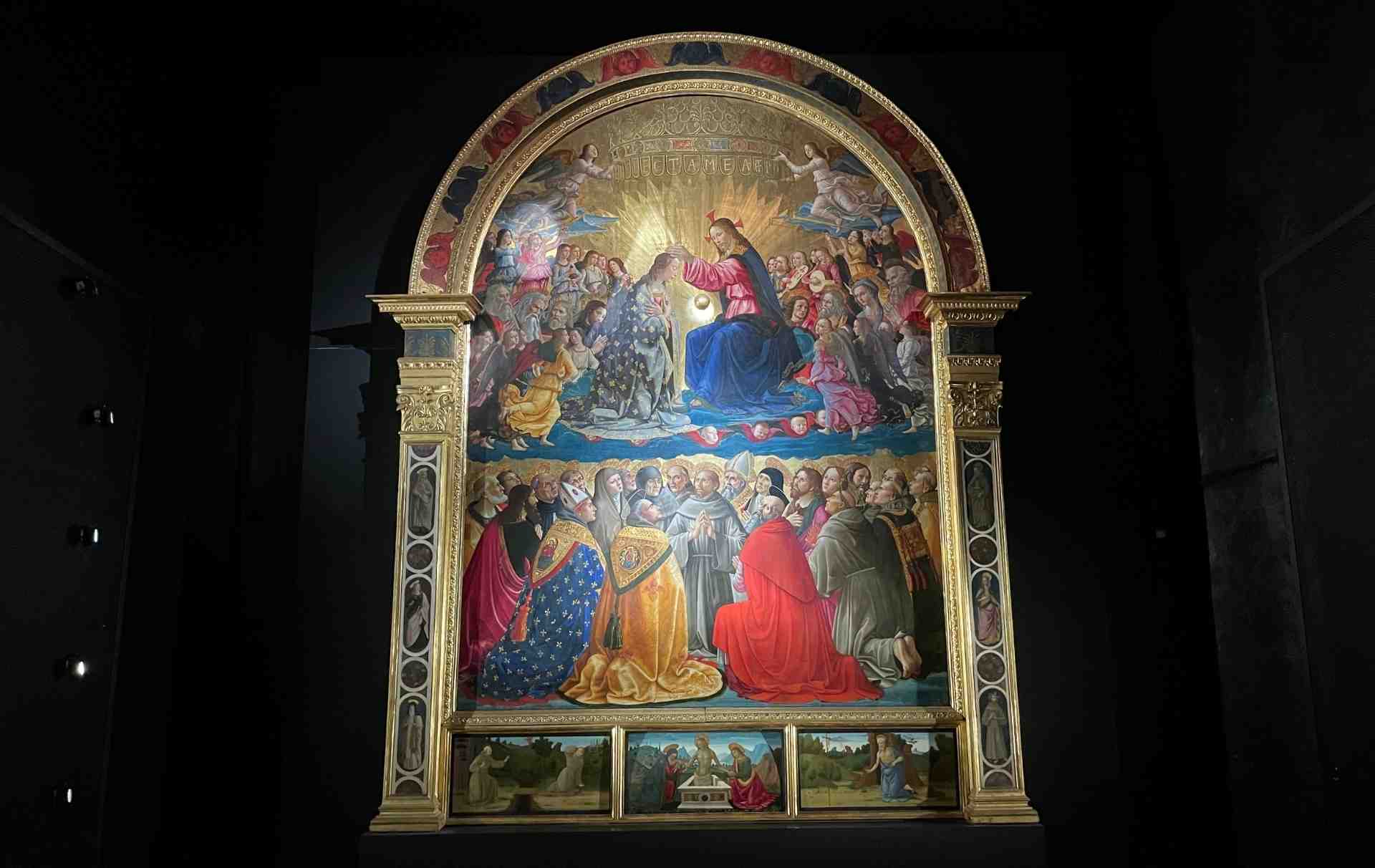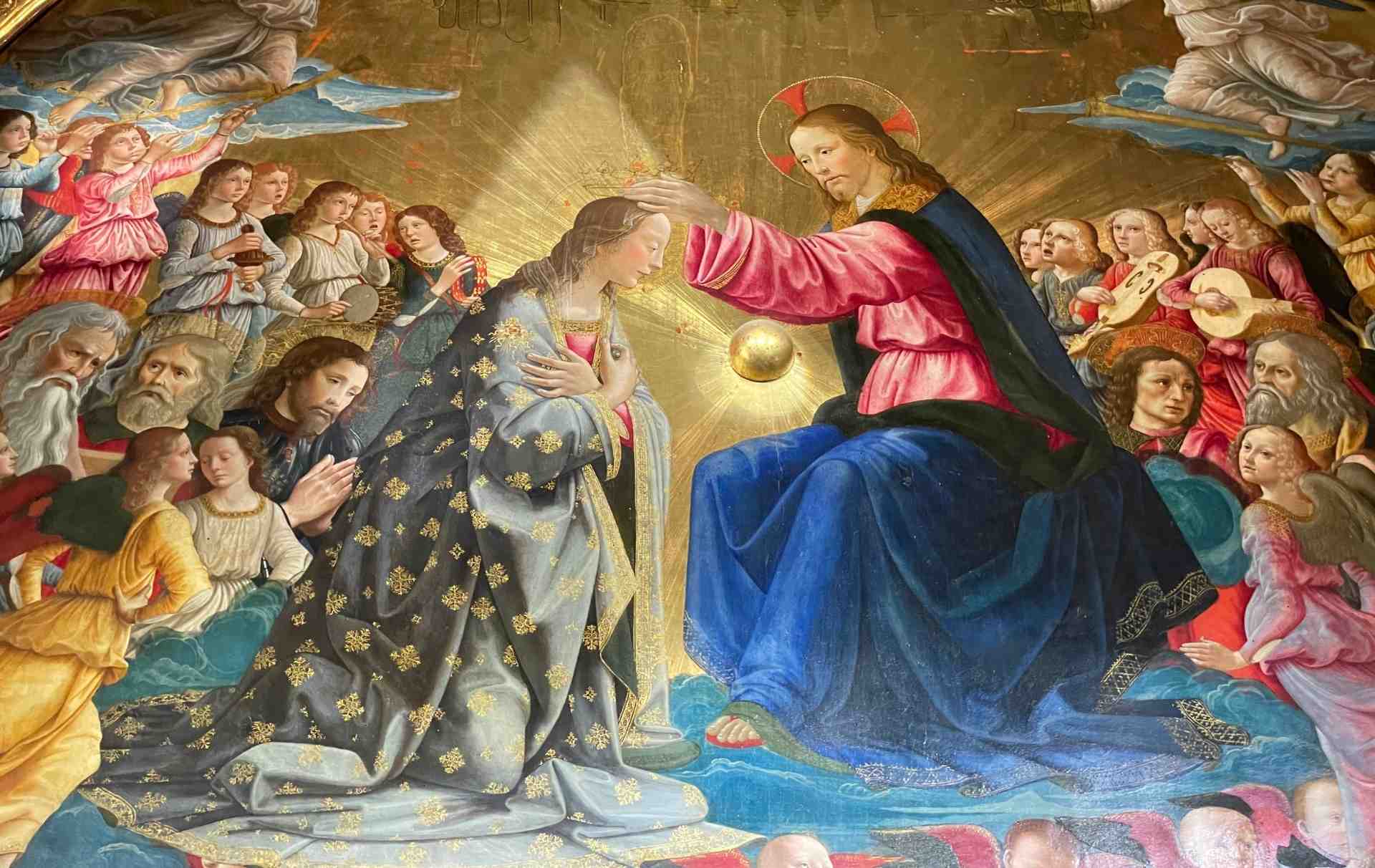The Art Gallery of Narni is located on the second floor of the Eroli Palace and has beautiful works which encompass several years which go from the XIV to the XVIII century.
The Art Gallery of Narni in Eroli Palace.
Projections, multimedia reproductions and evocative music introduce works of local production and absolute masterpieces such as the Annunciation by Benozzo Gozzoli – once inside the former Church of Santa Maria Maggiore, today Auditorium – and the altarpiece with the Coronation of the Virgin by Ghirlandaio – once in the Church of San Girolamo – both commissioned by Berardo Eroli.
The works of local artists.
Several are the canvases, the wood statues and the frescoes which come from the churches of Narni and of its territory, witness of the artistic ferment of a town which had an importance during the Middle Age.
Considerably the wooden statue of the Madonna enthroned with Child of the first half of the XIV century remembered by Giovanni Eroli in 1898 inside the Church of Santa Pudenziana in Visciano location.
Several are the works which come from the former Church of Santa Maria Maggiore, today Auditorium Mauro Bortolotti, like:
- the beautiful double-sided table of the Master of Narni of 1409 with Madonna enthroned with Child and two angels on one side and Coronation of the Virgin (top) and Dormitio Virginis (bottom);
- the fresco of the Workshop of the Master of the Dormition of Terni active in southern Umbria between the last decades of the XIV and the early XV century with Madonna della Misericordia crowned by angels;
- the fresco with Christ crucified between the Virgin, San Giovanni Evangelista and Sant’Andrea, a painter active between the last decades of the XIV and the beginning of the XV century.
Other works come instead from the Church of San Girolamo, like:
- a table of Sant’Antonio of Padova and a kneeling boy attributed to Piermatteo d’Amelia (or one of his collaborators);
- the panel by Beato Bernardino da Feltre always attributed to the same author.
The Annunciation of the Virgin by Benozzo Gozzoli.
One of the absolute masterpieces of the Art Gallery of Narni is, without doubt, the Annunciation of the Virgin by Benozzo Gozzoli of the XV century.
The painting comes from the former Church of Santa Maria Maggiore in Narni and is considered the first certain work of the Florentine master.
The commission it was attributed to the cardinal Berardo Eroli for the Church of the former complex of San Domenico :
- the small dogs of black and white color that in the painting appear embroidered on the carpet of the room of Mary constitute, in fact, a clear allusion to the religious order for which the work was conceived, the Dominicans (the “Do-minicanes”, from the Latin “Domini canes”, or “dogs of the Lord”);
- The narnese provenance of the painting is evidenced by the decoration of the pillar in the foreground that divides the scene in two, a plot of ivy leaves that is an undeniable reference to the emblem of the most powerful house narnese of the fifteenth century, that of the Eroli.
Despite the restoration and damage, this work is of considerable refinement, characterized by attention and care in the rendering of details that testify to the importance of the commission received by the painter: from the touches of light that embellish the hair, the faces and hands of the characters to the illusionistic game of double keys tucked into the lock of the wedding chest visible behind Maria, from the golden letters that run along the edge of the Virgin’s robe to the decoration of the wooden inlays.
The Coronation of the Virgin of Ghirlandaio.
The big canvas represented the Coronation of the Virgin was painted by Domenico Ghirlandaio for the Church of the Minor Observant of San Girolamo and ended in 1486 on commission of the cardinal Berardo Eroli, who took care of the restored of the church and of the covenant, but he couldn’t saw the realization.
The work represents the coronation of the Virgin between the Saints:
- on the left wall, from above, the Saints Elzeario, Lucia, a saint clarissa;
- on the right wall, from above , the Saint Luigi IX, Caterina d’Alessandria, a Franciscan Blessed;
- In the predella, from left to right, San Francesco receives the stigmata, the merciful Christ between the Virgin and San Giovanni Evangelista, San Girolamo penitent in the desert.
Discover Eroli Palace and the circuit of the museum.
Continue the visit to the Palace:
Go back to the principal page of the Palace.
Eroli Palace
Via Aurelio Saffi, 1, 05030 Narni TR
- from April to October : from Tuesday to Sunday , 10am-7pm
- from November to March : from Tuesday to Sunday , 10am-6pm
(last entrance is 45 minutes before the closing)
MUSEUM TICKET:
– full € 6,00 / reduced € 4,00
NARNIA PASS (Eroli Palace + Rocca Albornoz + self-driving):
– € 9,00
- from April to October:
from Monday to Friday , 9am-7pm
from Saturday to Sunday, 10am-7pm
- from November to March: from Tuesday to Sunday , 10am-7pm
from Monday to Friday, 8.15am-6pm
from Saturday to Sunday, 10am-6pm
It is suggested to park the car into the Suffragio Parking and go up with the elevator until via Garibaldi. Then you can reach piazza dei Priori and via Saffi.
Discover Narni.
Continue to walk with us discovering what to see inside the walls of Narni.
Or discover the points of interest of Narni and of its territory:
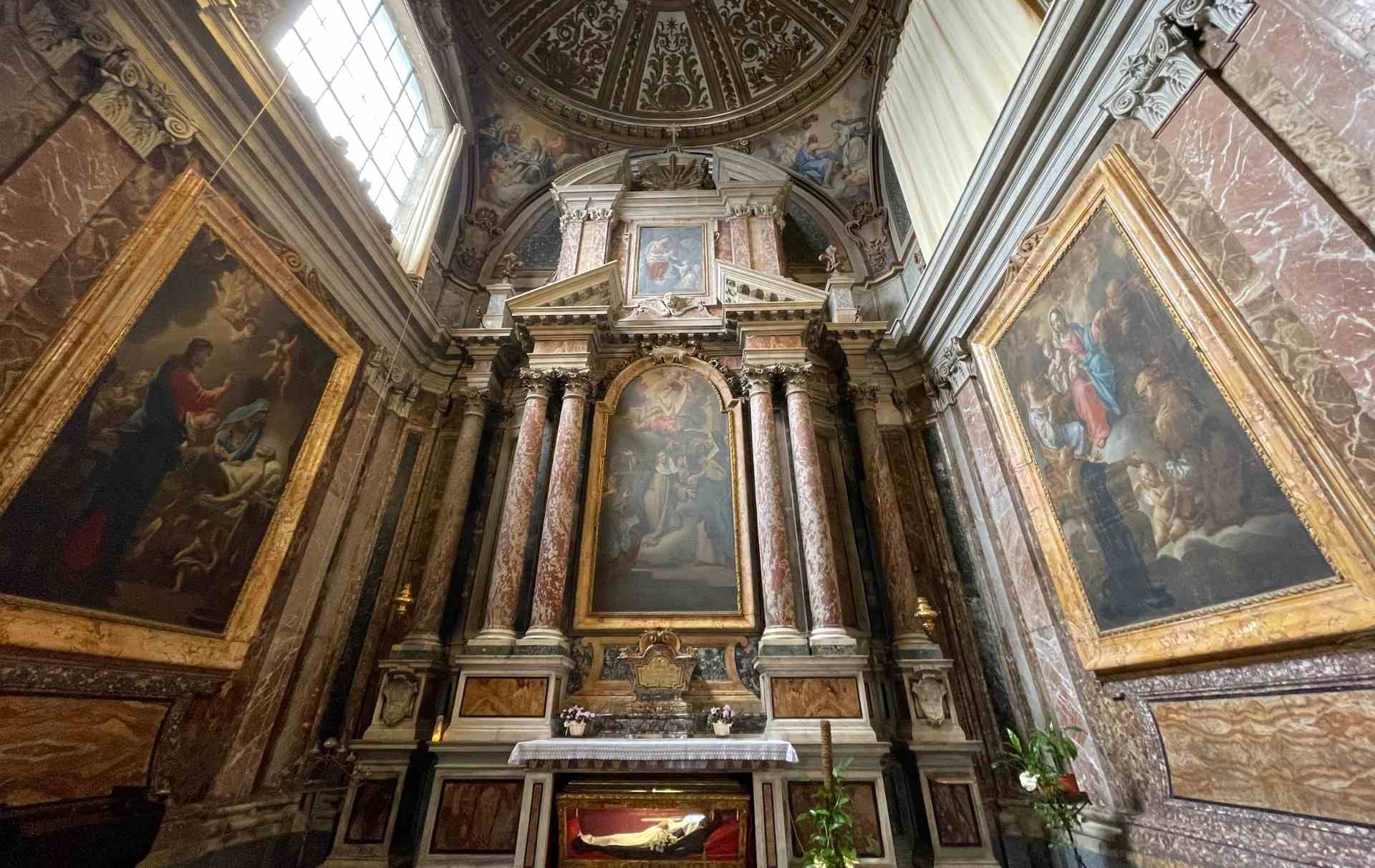
The transept: the Chapel of Blessed Lucia and that of San Giuseppe
On the two sides of the transept there are two of the most singular works of Narni’s Cathedral: the Chapel of the Blessed Lucia, in
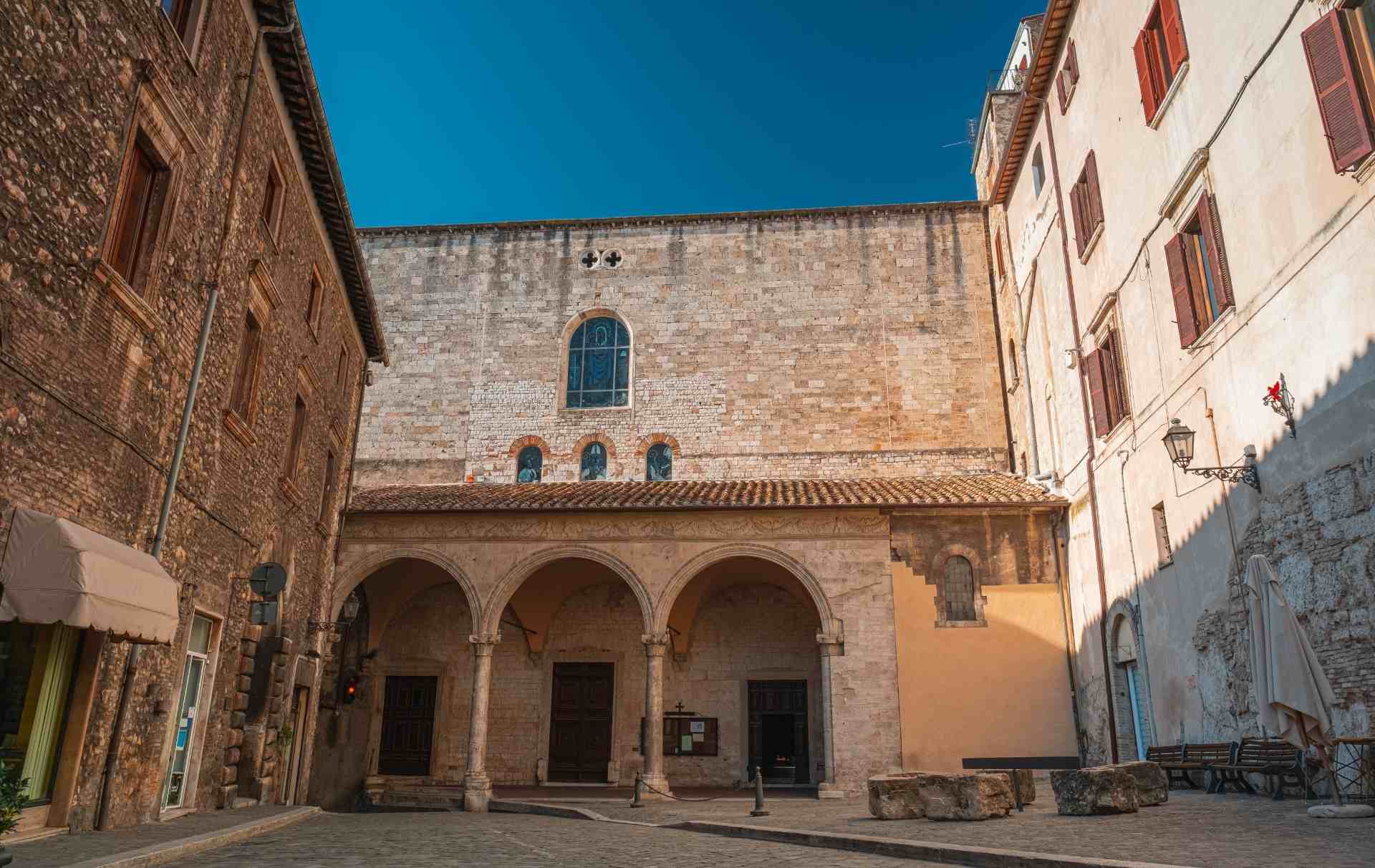
Cathedral of San Giovenale
Devoted to the first bishop of Narni who lived in the IV century BC, the Cathedral of San Giovenale is one of the most artistically,
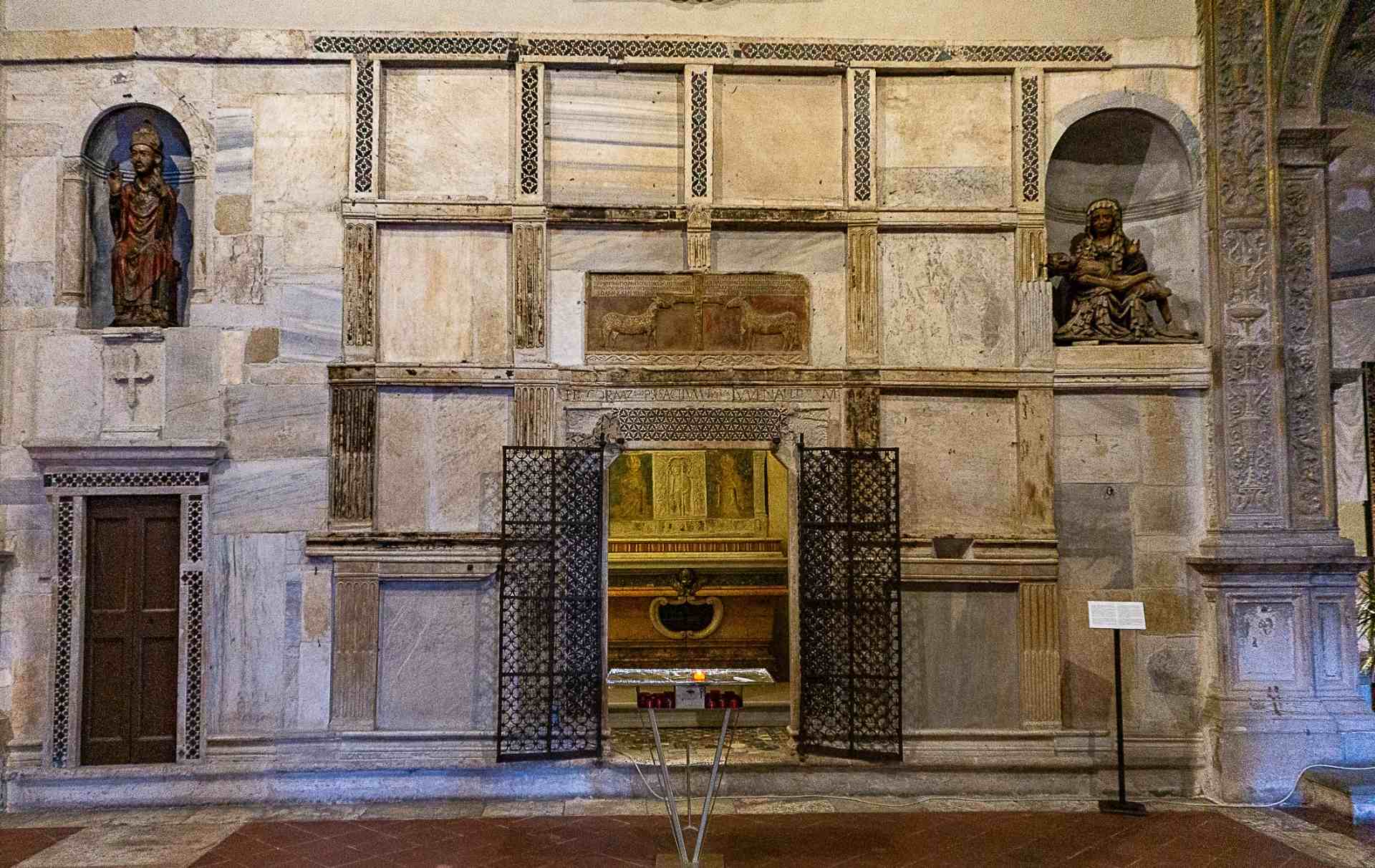
The right aisle, the fourth aisle and the Sacello of San Giovenale
One of the particularities of the Cathedral of Narni is the presence of two aisles instead of one. The right aisle continues with that birthed

